Few sights are quite so joyful in April and May as a sea of English bluebells (Hyacinthoides non-scripta). The UK is thought to have around half of the world's wild population of bluebells, and the sea of nodding, bell-shaped flowers are always a magical sight.

Large swathes of bluebells are a sign of ancient woodland, although they can also be found on moorland and popping up under hedges. Ancient woodland covers less than 3 per cent of the landscape and is under threat from development and the effects of climate change.
You may also like
- Everything you need to know about growing bluebells
- What's the difference between Spanish and English bluebells
- Tickets, dates and information for Chelsea Flower Show
- Here's what to do about invasive plants if they are in your garden
If you visit a bluebell wood, stay on paths and do not step on the bluebells. Colonies of bluebells take many years to establish and if the leaves get damaged or crushed, the plant may not recover for years. Keep your dog on a lead to prevent damage to plants, too.
Wild bluebells are protected by law: it is illegal to pick them or dig them up, or to propagate and sell them without a licence.
Many of us will have a local bluebell wood to enjoy – ask friends or neighbours if you're not sure where your nearest one is. You can also check for bluebell woods on the Woodland Trust and National Trust websites.
Here, we've rounded up some of the best bluebell woods to visit, many of them within glorious spring gardens, plus some more unusual sites such as moorland, too.
Looking for more inspiring gardens to visit?
Here's more on the difference between Spanish and English bluebells
Bluebell woods near me
Bluebell woods in London
Highgate Wood, north London
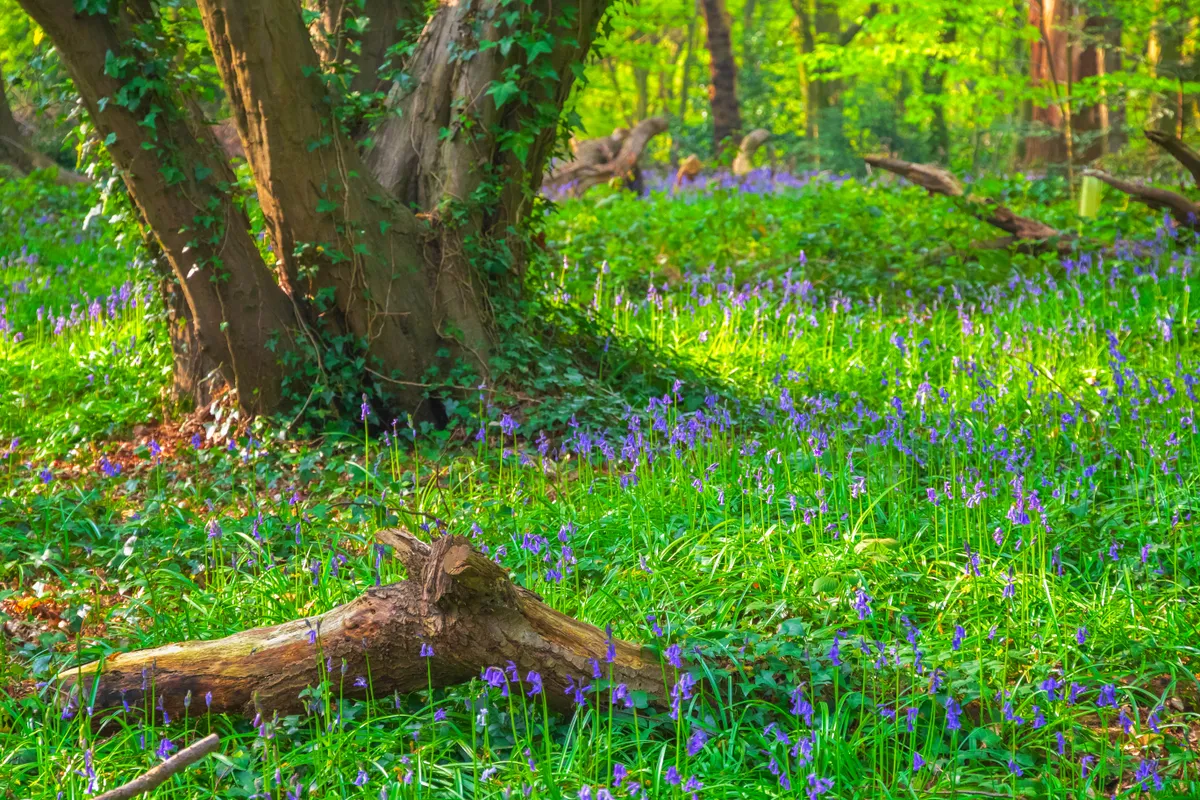
Highgate Wood was part of the ancient Forest of Middlesex which covered large parts of London, Hertfordshire and Essex and was mentioned in the Domesday Book. Stroll among the bluebells and forget that you're in the midst of travel zone 3. Enter through the Cranley Gate or Bridge Gate at the north corner of the park and follow the trails. The nearest tube is Highgate.
Isabella Plantation, Richmond Park, west London
Within the vast Richmond Park is the Isabella Plantation, a beautiful woodland garden. It is carpeted with bluebells in spring and is also home to one of the finest collection of azaleas in the country, in vivid pinks, reds and purples.
Wanstead Park, east London

A local conservation group has been working on this wood for years to enhance the show of bluebells - head to Chalet Wood and Warren Wood areas for the best displays. www.wansteadpark.org.uk
Oxleas Wood, southeast London
A site of special scientific interest (SSSI) in the Royal Borough of Greenwich, the ancient Oxleas Wood is thought to be at least 8,000 years old. The bluebells are a spectacular sight in spring. www.woodlandtrust.org.uk/visiting-woods/woods/oxleas-woodlands/
Here are more gardens to visit in London
Bluebell woods in Kent and the South East
Emmetts Garden, Kent

Emmetts Garden is known for its fabulous spring colour. Every year, the hillside is covered with a dazzling display of bluebells. There is also a tulip meadow, planted with 7,000 tulips every year and 80 species of rhododendron. www.nationaltrust.org.uk/visit/kent/emmetts-garden
Sissinghurst Castle, Kent
Over half of the 150-acre woodland on the Sissinghurst Castle estate is filled with the fresh, heady scent of bluebells in spring. Take a walk through the grounds and you can admire other wild flowers too, including primroses, stitchwort and wild sorrel. And of course the renowned garden is bursting into life, too – the Nuttery, White Garden, Lime Walk and Orchard look particularly lovely in spring. www.nationaltrust.org.uk/visit/kent/sissinghurst-castle-garden
Hole Park Gardens, Kent
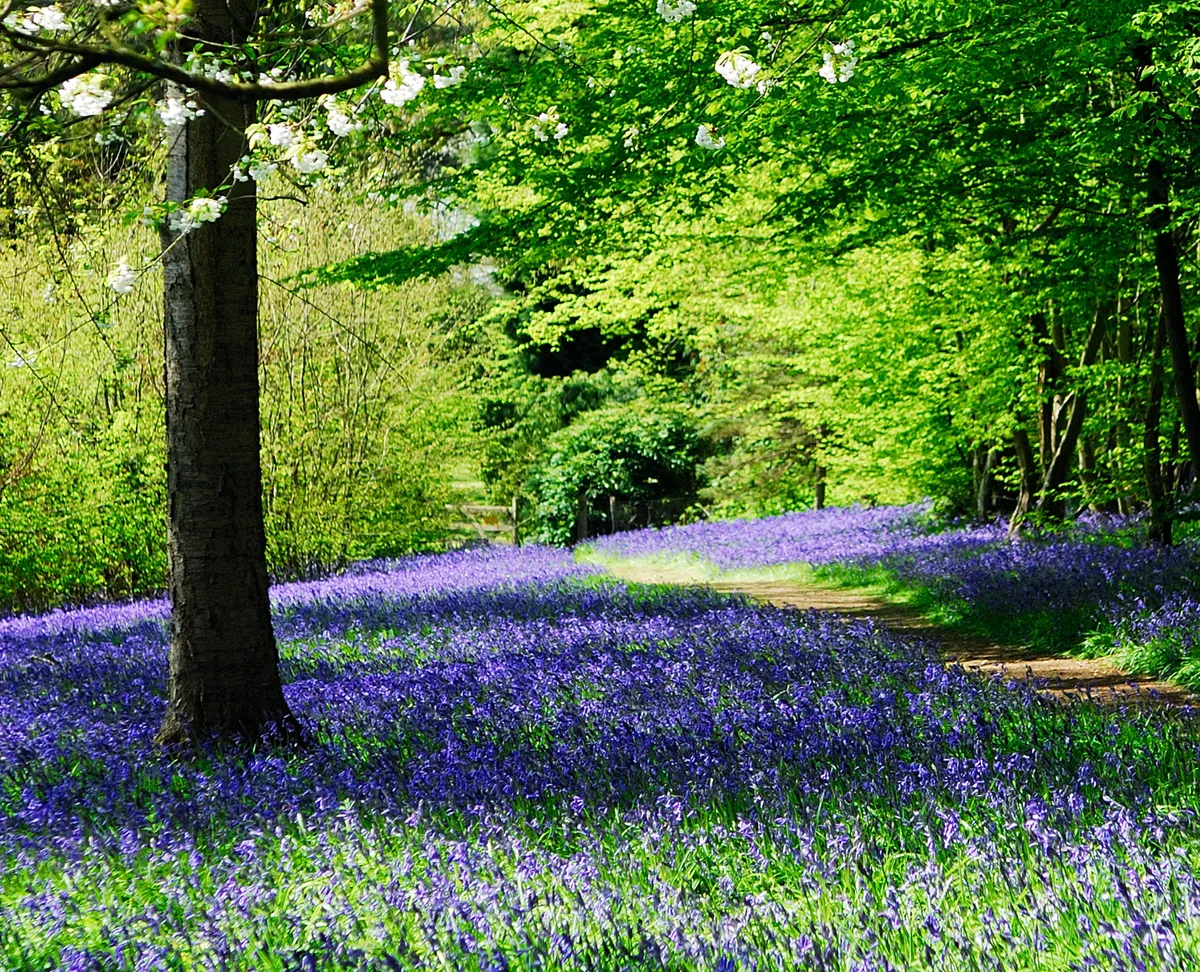
The bluebells are so eagerly anticipated at Hole Park that there is a 'bluebell barometer' on the website, updated daily. You can also enjoy wisteria, camellias and magnolias in bloom. www.holepark.com
Ashridge Estate, Buckinghamshire

Join one of the guided bluebell walks to see the impressive spread of bluebells in Dockey Wood on the Ashridge Estate and learn how the rangers are taking decisive measure to preserve them.
Hatchlands Park, Surrey
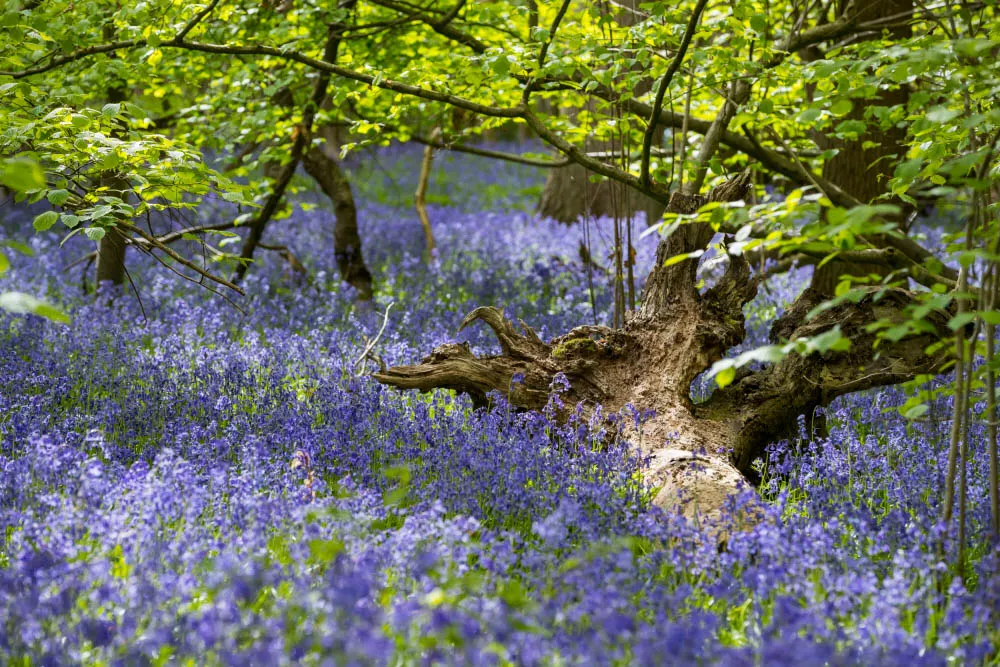
Little Wix Wood is a patch of ancient semi-natural woodland that was first recorded in the Chertsey Chronicles during the 13th century. It erupts into a haze of blue in spring.
Bluebell woods in the East
Blickling Estate, Norfolk
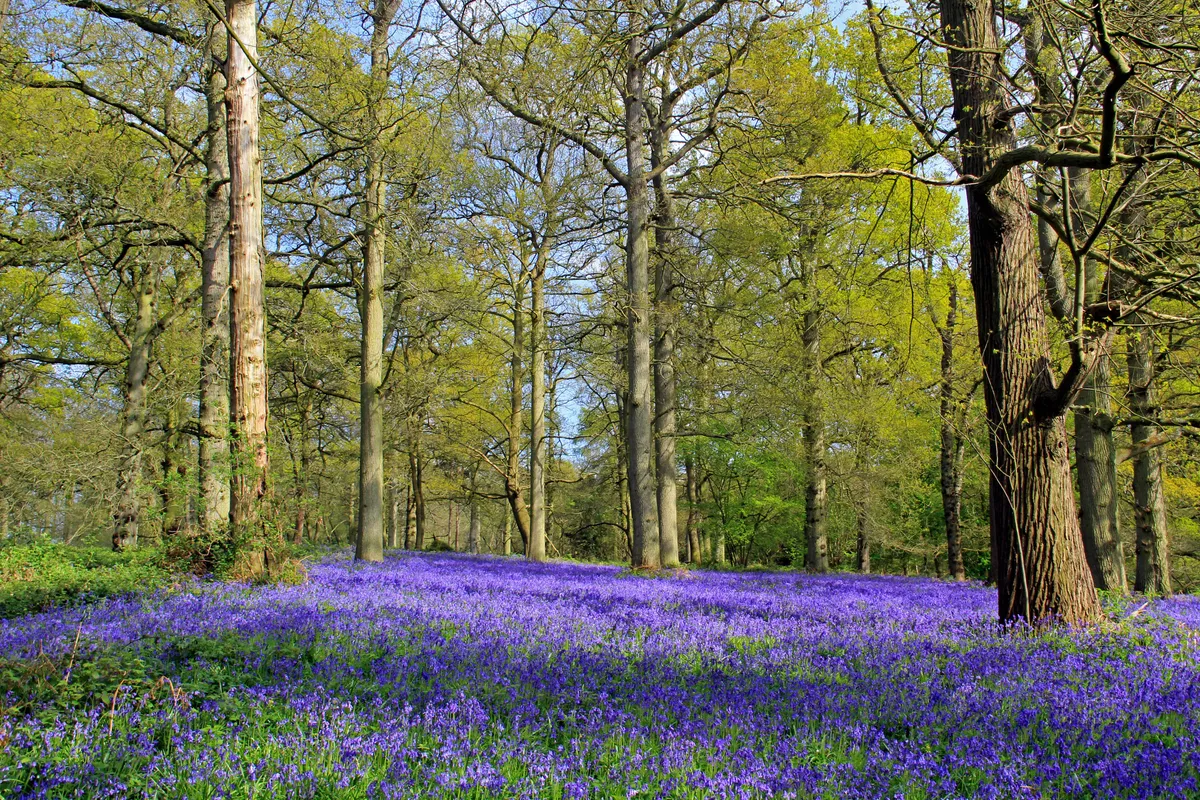
The Blickling Estate, another National Trust property, is of the best places to see bluebells in the East of England. Follow the winding paths through the Great Wood.
Become a National Trust member for free entry and parking.
Bluebell woods in the Midlands
Clumber Park, Nottinghamshire
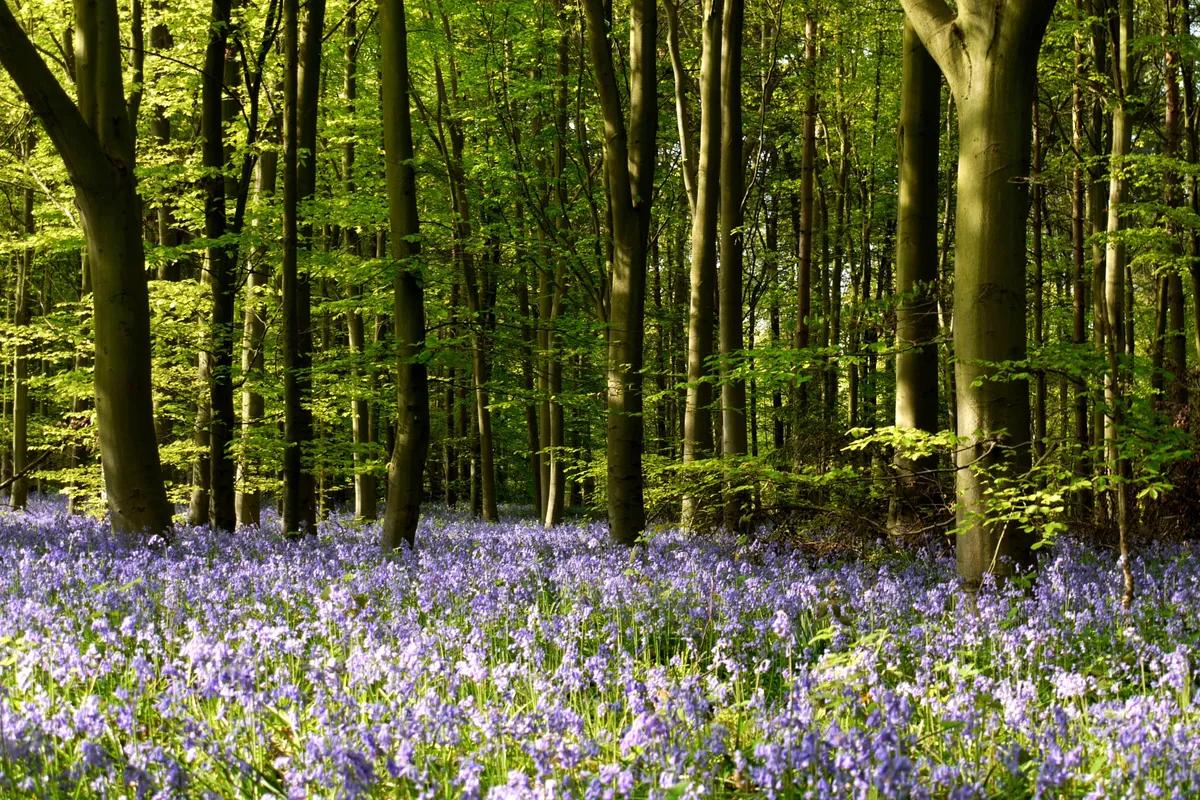
The Bluebell Wood at Clumber Park is one of the best places in the UK to see bluebells, with millions of bulbs growing closely together. A three-mile trail, starting in Hardwick village, runs through the ancient woodlands.
Calke Abbey, Derbyshire

Enjoy a 1.5km walk around Calke Abbey and pass through the Serpentine Wood, home to a mass of bluebells each spring.
Clent Hills, Worcestershire

The Clent Hills in Worcestershire, managed by the National Trust, are awash with bluebells in spring and a local favourite.
Bluebell woods in the North
Rufford Old Hall, Lancashire
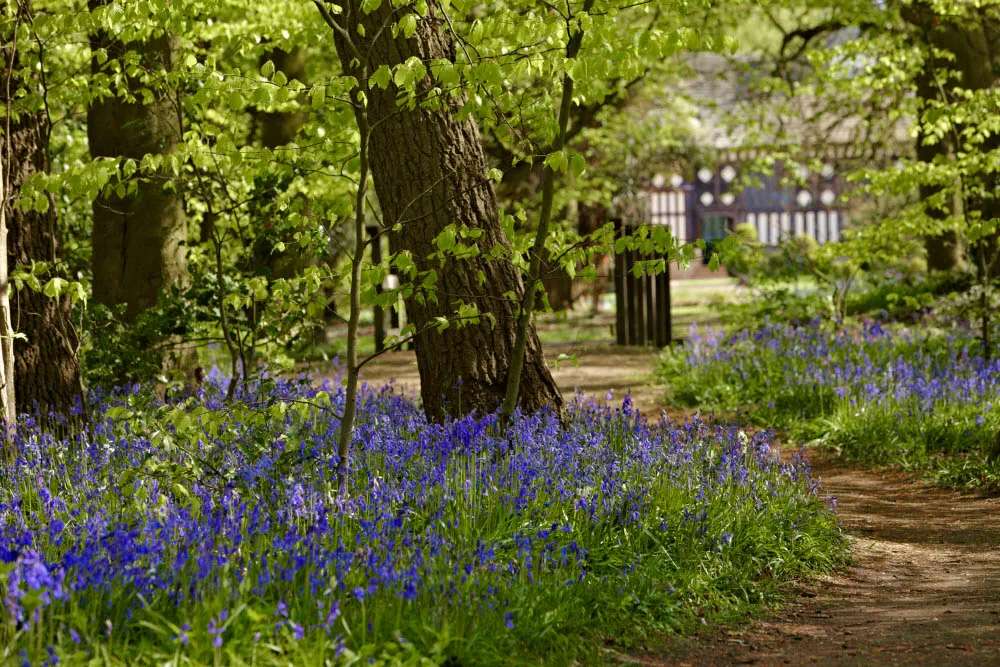
The North Woods at Rufford Old Hall are one of the best places to see bluebells in the North West.
Hardcastle Crags, West Yorkshire
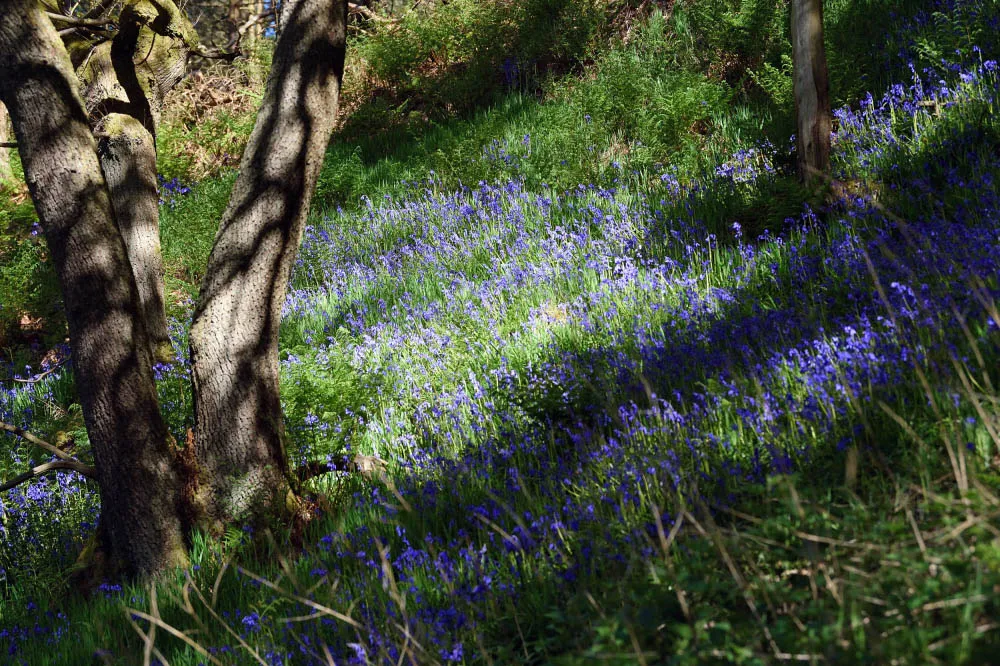
Bluebells are a highlight at Hardcastle Crags, where they cover the woodland and valley sides. Follow the waymarked trails.
Roseberry Topping, North Yorkshire
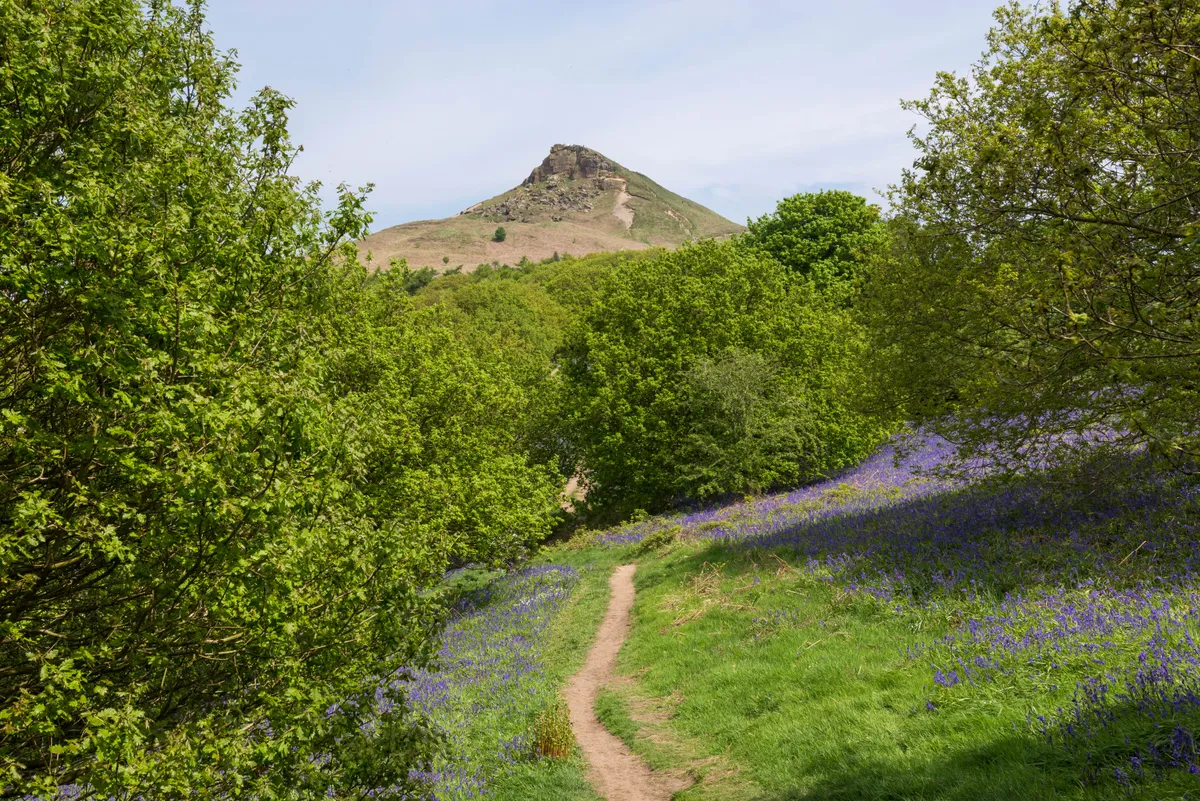
Hike around the base of Roseberry Topping in the North York Moors (known as Yorkshire's Matterhorn) in spring and you will enjoy the beautiful haze of bluebells.
Muncaster Castle & Gardens, Cumbria
Enjoy a walk through the high woodlands above the Castle when the bluebells are in flower and experience what the Castle calls "bluebell heaven". They are said to have inspired the poet Gerard Manley Hopkins, who wrote effusively about bluebells. www.muncaster.co.uk
Bluebell woods in the West
Stourhead, Wiltshire

Head to Bonham Wood to see gorgeous swathes of bluebells in May, complemented by views across the lake. www.nationaltrust.org.uk/visit/wiltshire/stourhead
Westonbirt Arboretum, Gloucestershire
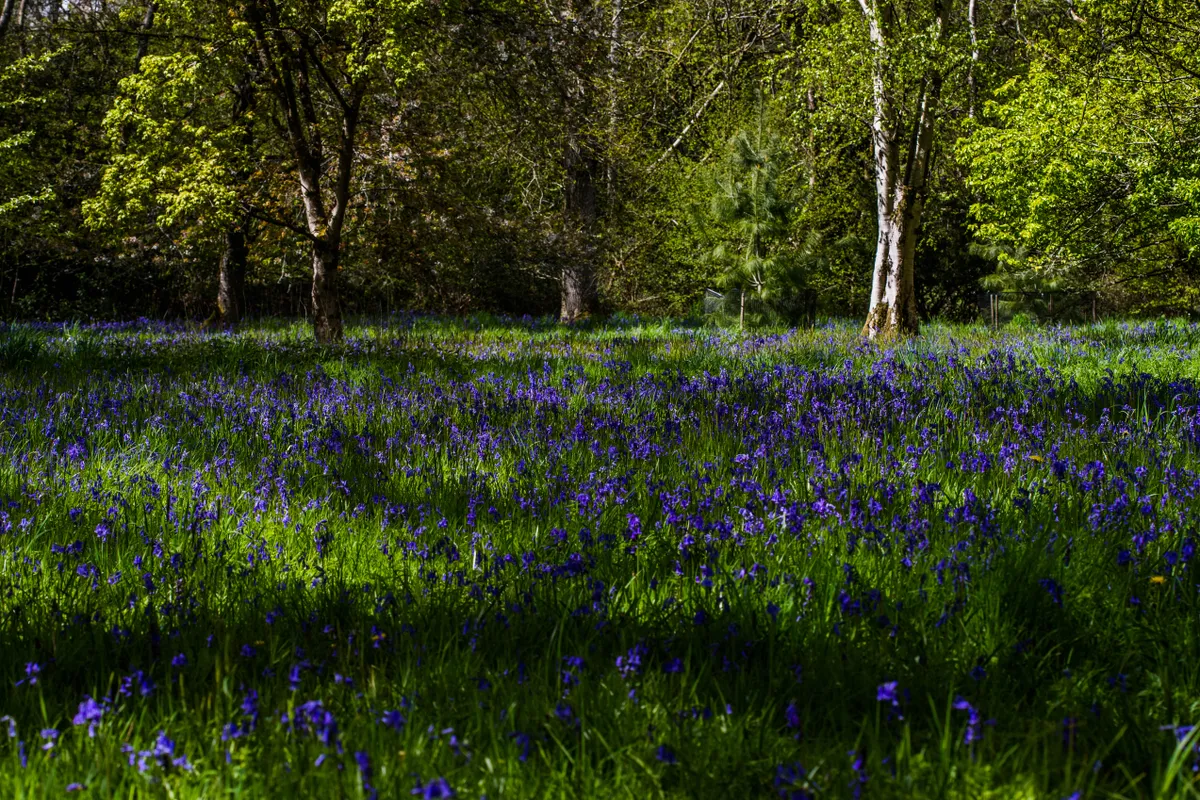
Westonbirt, The National Arboretum is a wonderful place to visit to see bluebells at their best. The woodland floor filled with their blue haze in Silk Wood during late spring. Enjoy lots of spring blossom too, plus magnolias, camellias and rhododendrons.
Holwell Lawn, Devon
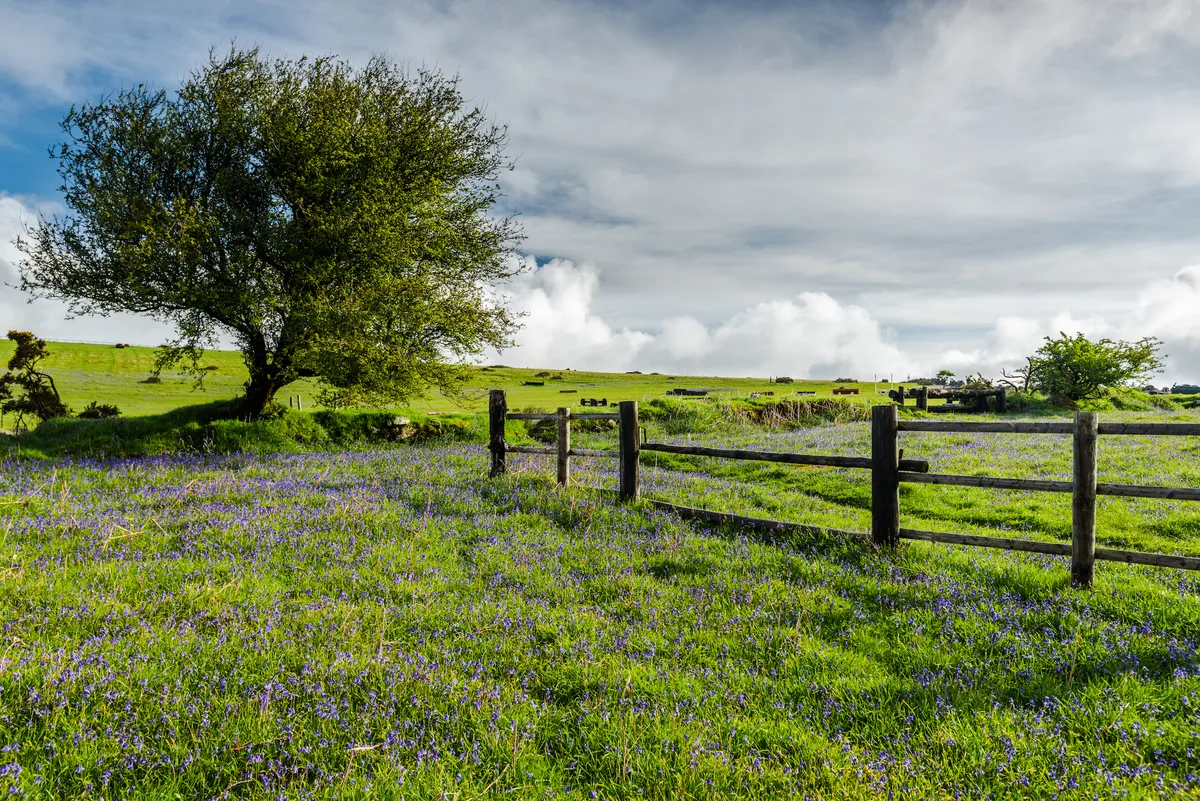
The Holwell Lawn bluebell circular walk starts by Hound Tor, in Dartmoor National Park, where you can see the bluebells from an elevated height. From there, a grass track takes you through the carpet of bluebells past ancient sites and on to other tors. On a sunny day, the sight and smell of the flowers drift across the moor. This route is easily accessible and suitable for all ages. holidayindartmoor.co.uk.
Hartland Abbey and Gardens, North Devon
Built in the 12th century, Hartland Abbey survived as a monastery longer than any other in the country. The 18th-century woodland gardens were created on either side of the Abbey and woodland walks lead to four secret walled gardens. In spring the wood is full of colour and the bluebell display is spectacular. hartlandabbey.com.
Enys Gardens, Cornwall

The six-acre meadow at Enys, known as Parc Lye, is a stunning sight in spring. It has been undisturbed since medieval times. English bluebells and wild garlic reach their peak of flowering in early May. The garden is open daily for its Bluebell Festival every year, from late April to early May. enysgardens.org.uk
Godolphin, Cornwall
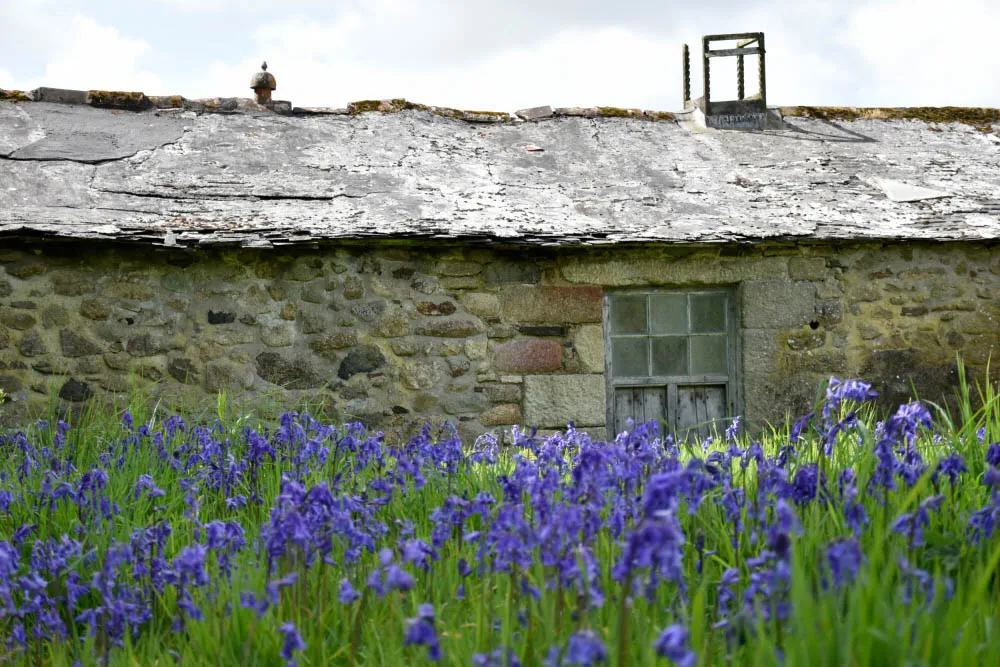
Godolphin's 16th-century garden is one of the most significant in Europe. In the woodland, years of mining have left an undulating landscape behind– covered in bluebells in spring.
Bluebell woods in Scotland
Glen Finglas, Stirling
Glen Finglas a great expanse of ancient woodland, lochs and open heathland at the heart of Loch Lomond & The Trossachs National Park. You can walk and mountain bike through the estate and there is a mix of short lowland walks to longer upland trails. It is the largest of the Woodland Trust's estates and a popular spot to see bluebells amongst the stunning Scottish scenery. woodlandtrust.org.uk.
More gardens to visit in Scotland
Bluebell woods in Wales
Skomer Island, Pembrokeshire
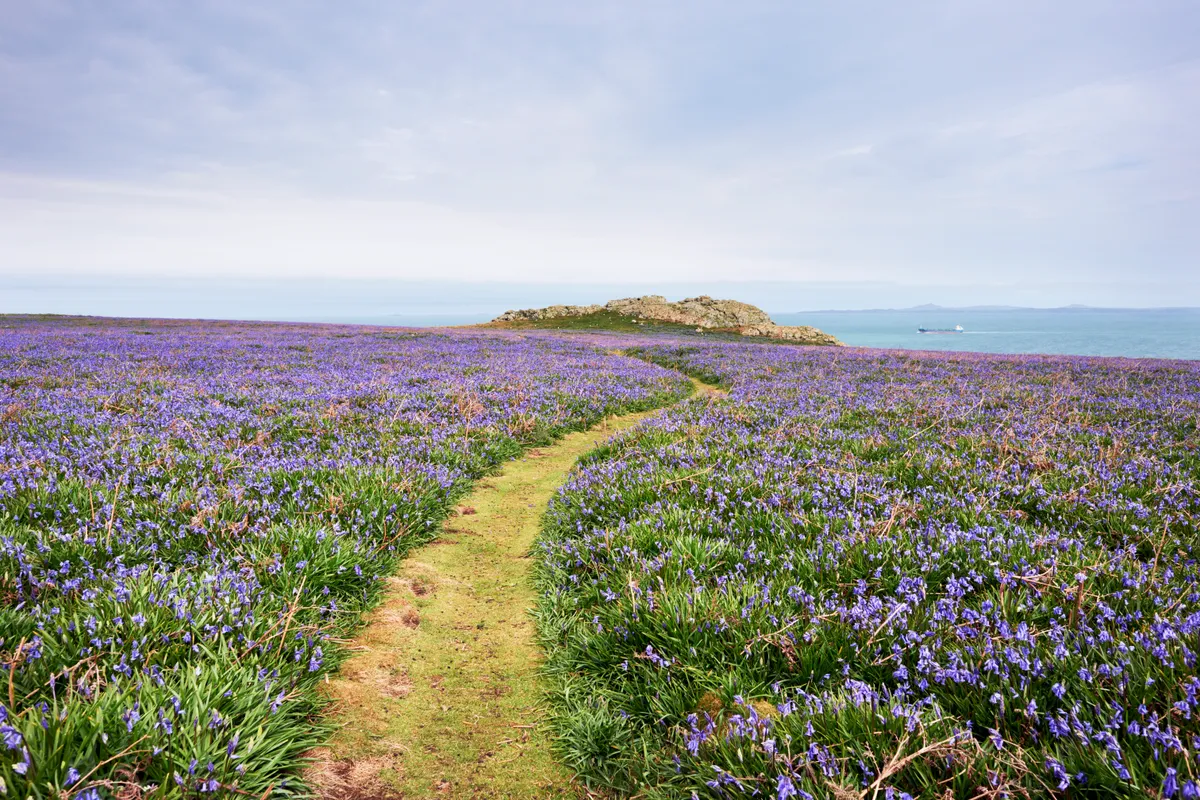
This small island off the Pembrokeshire coast is home to lots of exciting flora and fauna. Seals, buzzards, rabbits and puffins are a regular sight and in May, bluebells and campion cover the heathland and turn the island blue. The colours are so vivid, they can be seen from the mainland.
You will need to wear suitable clothing and to access the island you will need to climb 87 steep steps from where the boat lands. Boats run from Martin's Haven in Pembrokeshire daily; early booking is advised. welshwildlife.org
Dinefwr, Camarthenshire
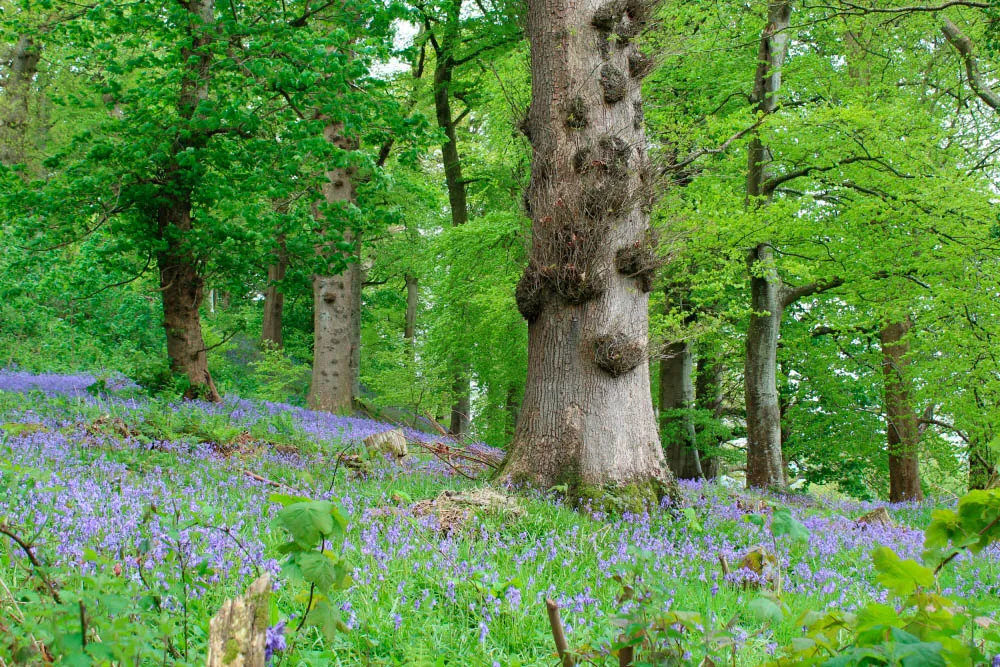
Dinefwr is a National Nature Reserve and is bursting with wildflowers in spring. It is famous for its beautiful bluebell display on Rookery Ridge. Pick up a map at reception and follow the Cattle Trail to see them.
Coed Cefn, Crickhowell, Powys

Coed Cefn is dominated by a canopy of oak and beech and in May, the ancient trees provide shelter for the bluebells carpeting the woodland floor. Adding to the history is an Iron Age hilltop fort and dry stone walls. Refresh yourself afterwards with coffee and cake in one of Crickhowell's lovely tea shops. woodland trust.org.uk.
Pwll-y-Wrach, Powys
Pwll-y-Wrach nature reserve in the newly renamed Bannau Brycheiniog National Park contains 43 acres of ancient woodland and a spectacular double waterfall, which plunges into a deep pool - giving the reserve its name Pwll-y-Wrach Witches' Pool. In late spring, bluebells mix with the white flowers of wild garlic, filling the air with amazing scent. After rain the path can be slippery and uneven underfoot but if the weather is warm, it's a beautiful spot for a swim. welshwildlife.org
Penrhyn Castle and Garden, Gwynedd

Penrhyn Castle is known for its dazzling displays of daffodils, followed by equally impressive bluebells.
More gardens to visit in Wales
Where to see bluebells in Northern Ireland
Murlough National Nature Reserve, County Down
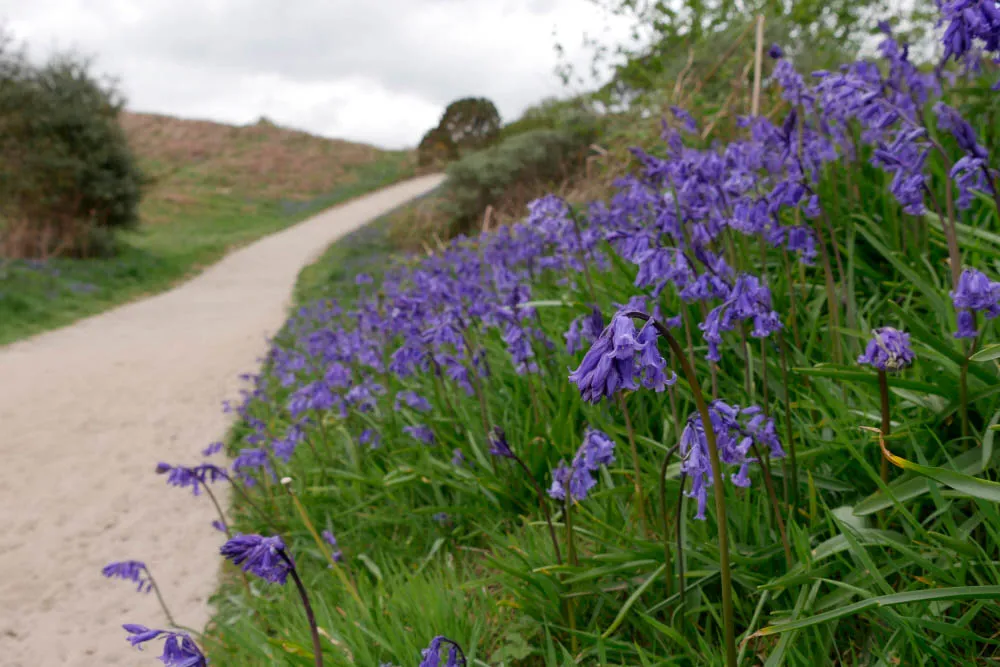
The coastal landscape serves as a beautiful backdrop for wild flowers in spring, including a display of bluebells in the woodland. www.nationaltrust.org.uk/visit/northern-ireland/murlough-national-nature-reserve
Castle Ward, County Down
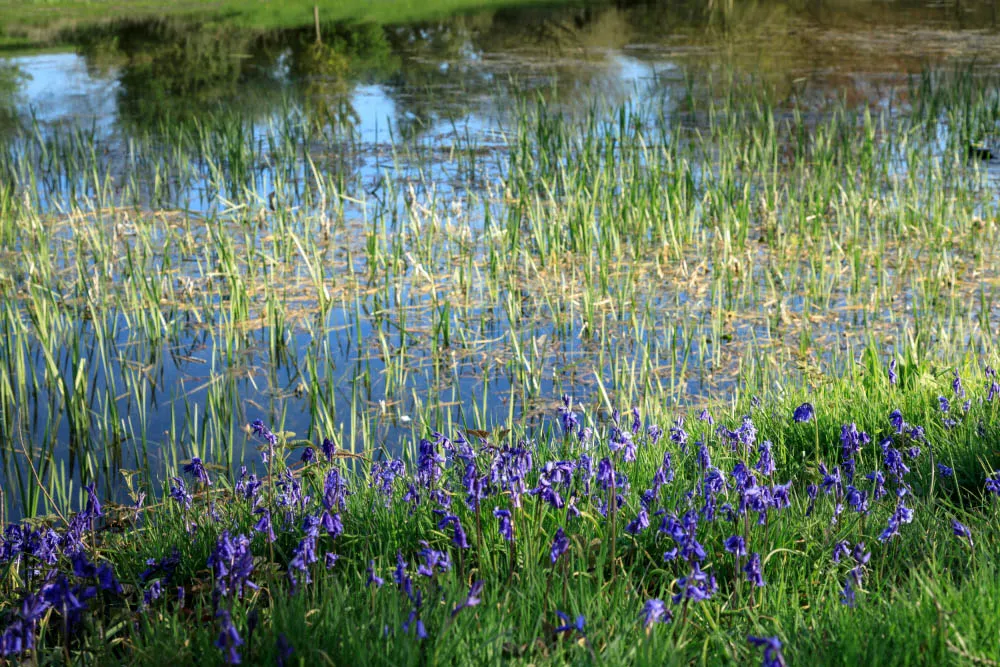
Discover five miles of bluebell trails on the estate of this part Gothic castle and part classical Palladian mansion.
Interested in growing bluebells yourself? Here's everything you need to know.